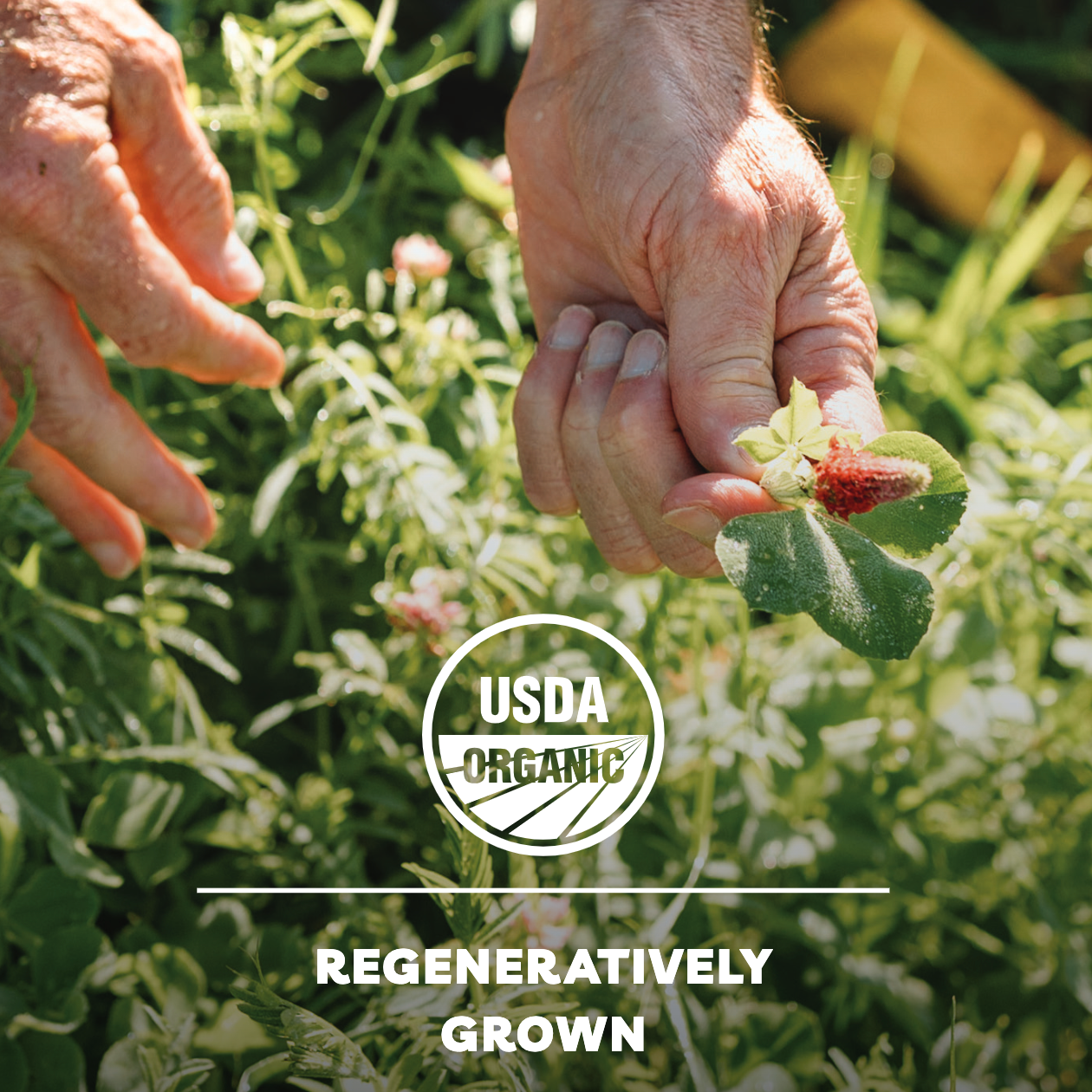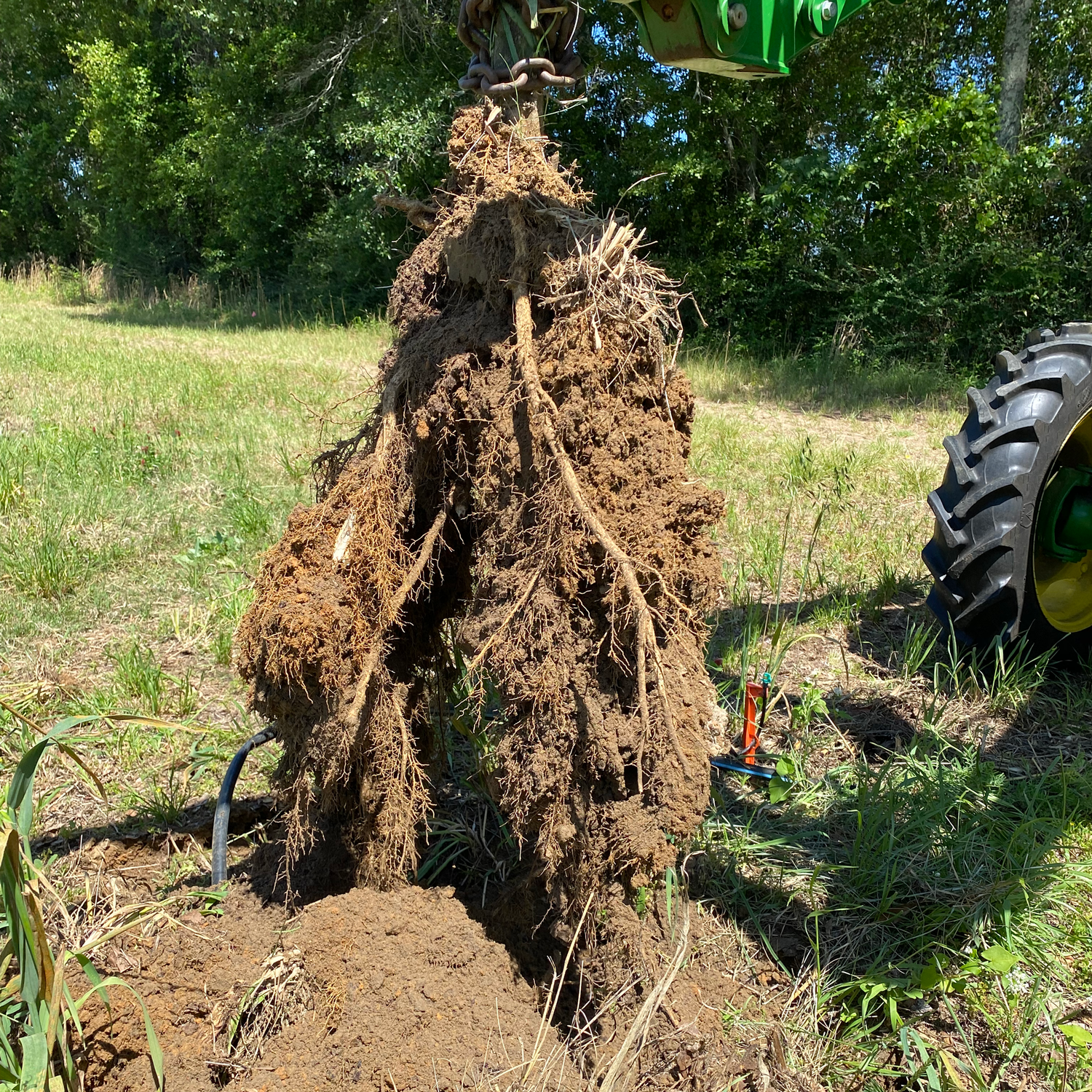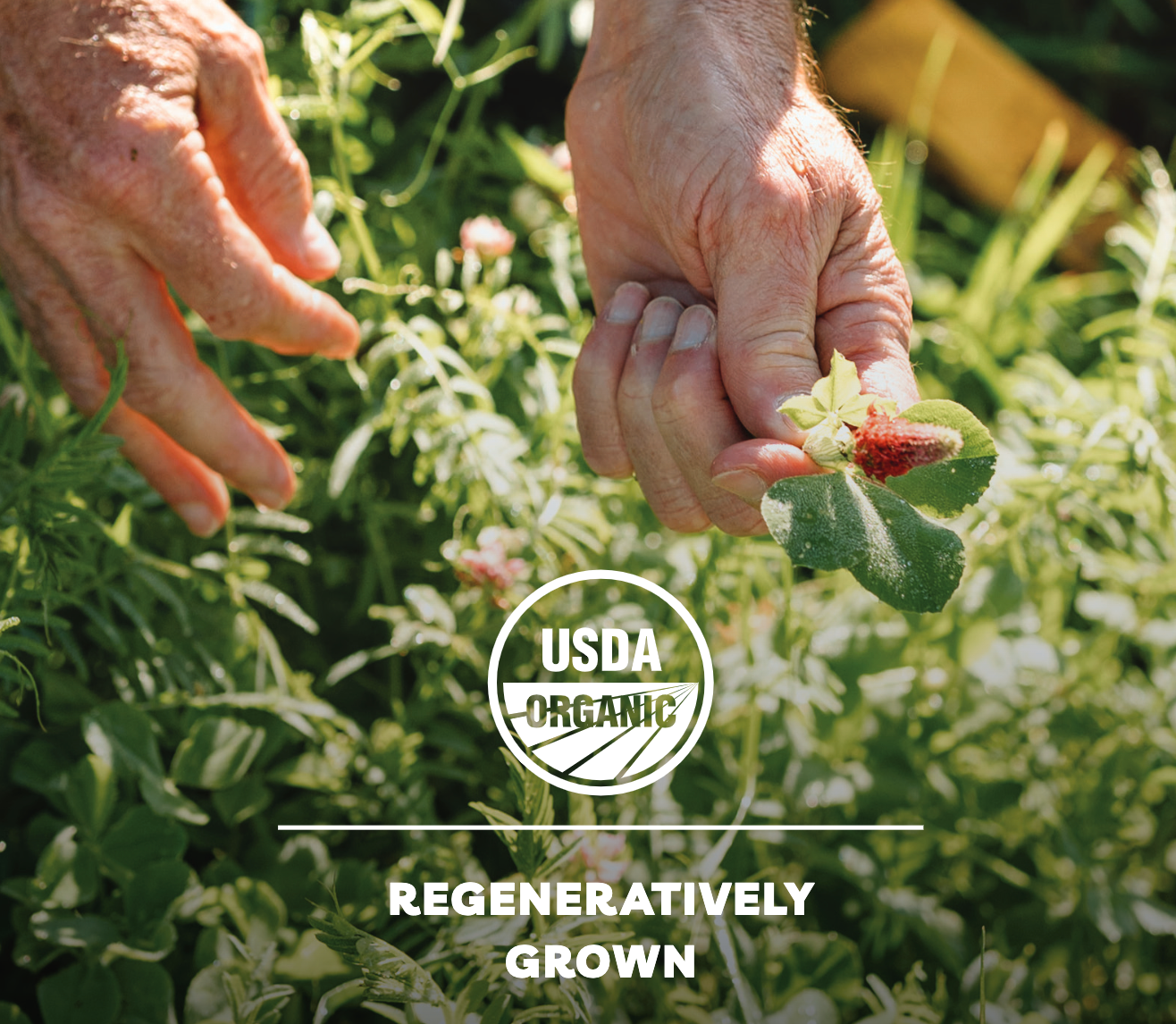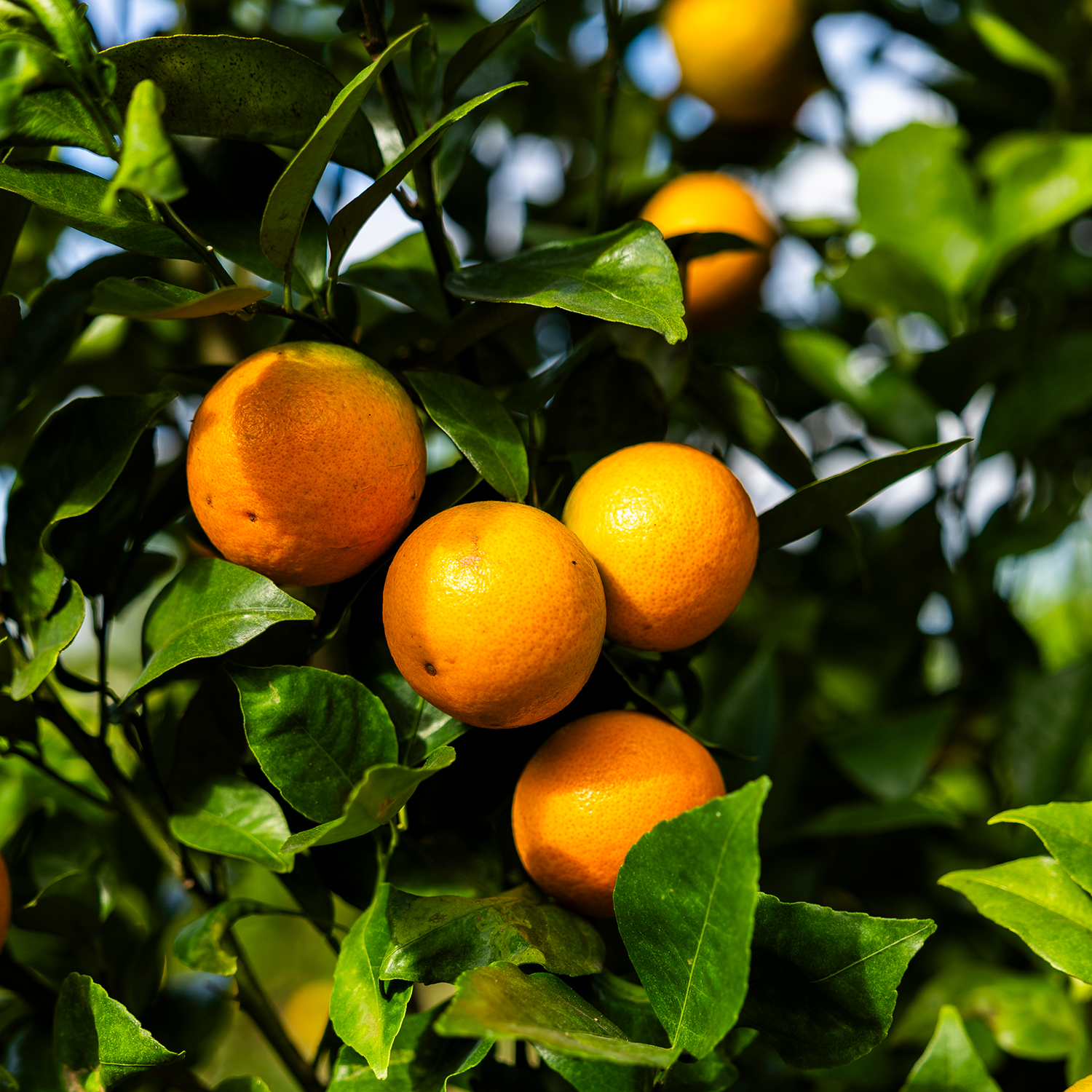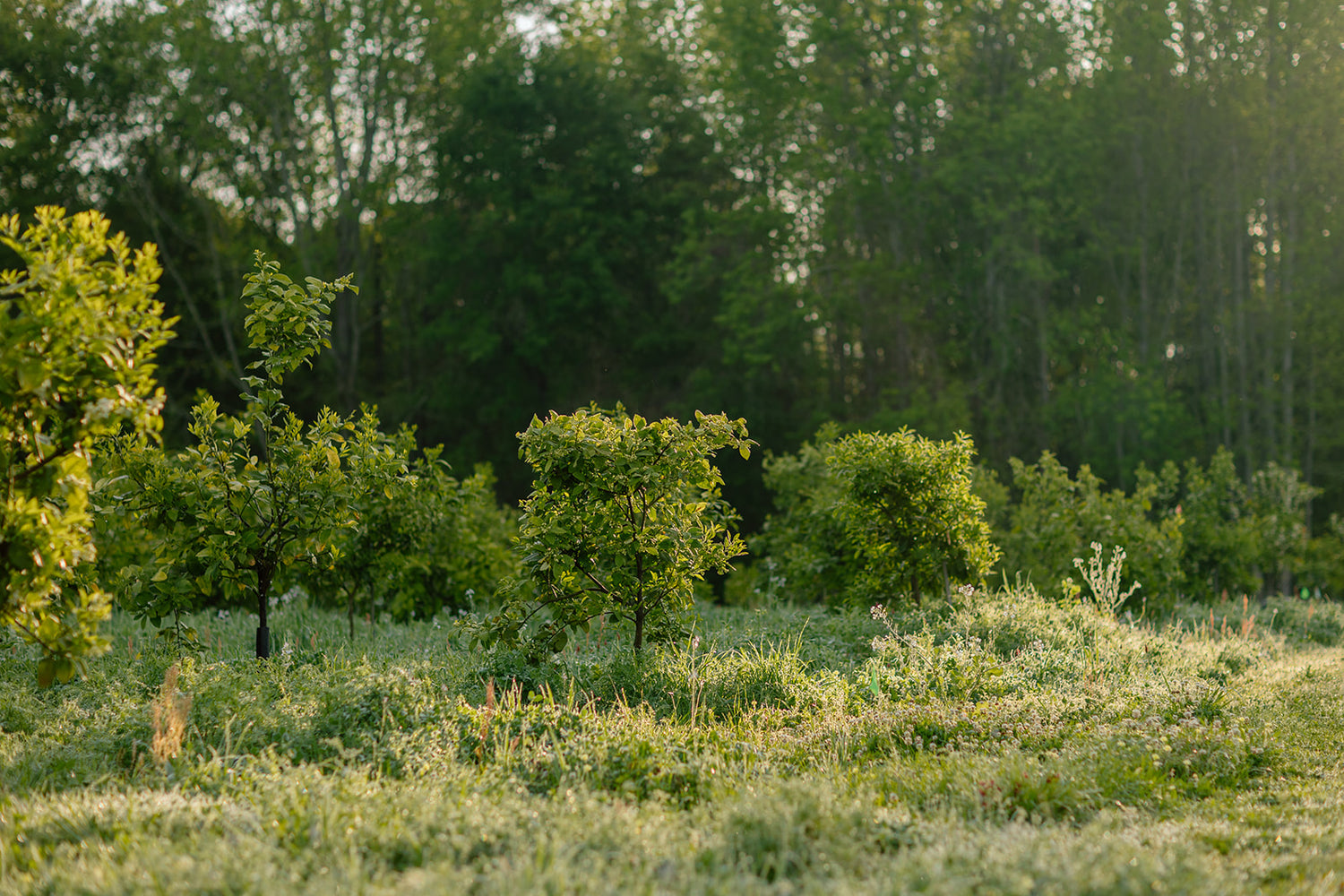
REGENERATIVE & ORGANICALLY GROWN
HOW WE FARM
Regenerative farming is all about growing plants as part of a thriving ecosystem. Instead of being isolated, each plant is supported by and contributes to the living soil around it. Unlike conventional farming, which relies on tilling, pesticides, and chemical fertilizers that strip away life, regenerative farming nurtures the soil with the natural interaction of plant roots and microbes. This creates a continuous exchange of nutrients, resulting in fruit that is truly complete - rich in all the vital components that a healthy ecosystem provides.
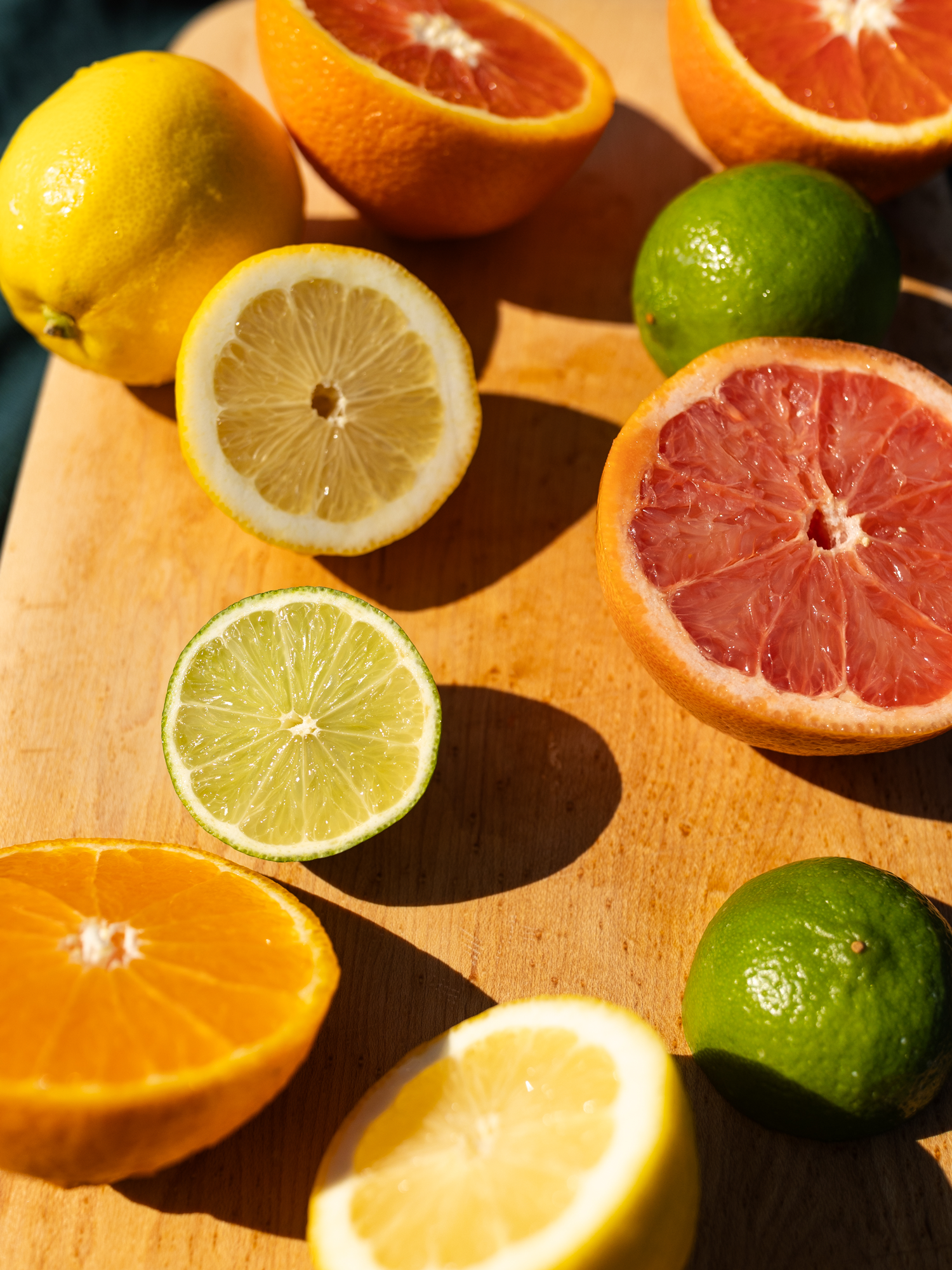
REGENERATIVE FARMING GIVES LIFE
When you eat fruit from a regenerative farm, you're not just getting a piece of produce; you're capturing a slice of that entire ecosystem. It’s the culmination of a natural process designed to sustain life. This fruit is packed with everything needed to start a new cycle of growth, and when we eat it, we absorb all the nutrients that nature intended to sustain our lives.
In contrast, industrial or conventionally grown fruit is often grown with the purpose of being big and colorful on the outside, but the end result is fruit that is hollow and lacking in nutrients on the inside. It’s grown quickly in a sterile environment, inflated with chemicals, but without the life-giving processes that make fruit truly nourishing.
SO, HOW DO WE ACHIEVE THIS ON THE FARM?
NUTRITION
It’s a slow and careful process. We never till the soil, add chemicals, or spray pesticides. Instead, we focus on restoring the natural balance. Organic nutrition is spoon-fed and the trees vitals checked regularly so we’re feeding them exactly what they need. The trees aren’t forced to grow like they would with synthetic fertilizer in an industrial grove. Our trees grow slower and are therefore healthy and bursting with life.
SOIL HEALTH
We focus on feeding our soil the best diet possible, reintroducing vital microbes and nourishing them with organic goodies like compost, humus extract, kelp, fish hydrolysate, and molasses. It all starts in the greenhouse, where our transplants get a head start thanks to Herb’s careful inoculation of the trees. The thriving bacteria in the soil go to work, unlocking minerals and producing essential enzymes, hormones, and proteins. Meanwhile, mycorrhizal fungi form an underground network, delivering these nutrients straight to our trees—mimicking how trees naturally thrive in a forest.
Photo - Grapefruit root system from a a tree lost in the freeze shows root proliferation
COVER CROPS
We surround each tree with a diverse array of plants, also known as cover crops, that co-exist and support each other. The cover crops pump 40% of everything they produce out through the roots to build their microbiome support system We select 10 species to plant in the spring and a different 10 to work all winter. Over time, an ecosystem forms, where every plant, tree, and microbe works together to produce vibrant, nutrient-dense fruit.
PESTS
Believe it or not, we virtually have no pests. Our healthy trees simply don’t get diseases. The insects that plague our neighbors, prompting them to use pesticides, are rarely found here—except for one small invader, the Citrus Leaf Miner. Since it was introduced from outside the country, it has no natural predators to keep it in check. While this throws off the natural balance, we manage it as best we can using natural solutions like Neem oil and Thyme oil.
WILDLIFE HABITAT
Beneficial insects play a crucial role in keeping our ecosystem in balance, and our cover crops provide blooms for pollinators nearly all year round. A flock of turkeys has even made the farm their winter home, nesting in the cover crops. It’s a joy to watch their babies scamper away walking through the grove each morning. The farm also provides a perfect, protected habitat for rabbits. We make sure to flag their nests so we know where they are and can avoid disturbing them.
And then, we get to enjoy the benefits. The fruit that comes from this process is not just food—it's a source of true nourishment that no industrial farming method can replicate.

